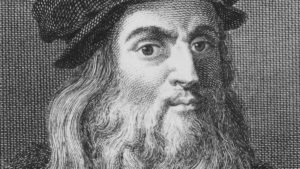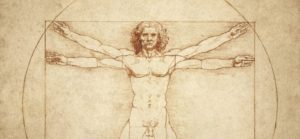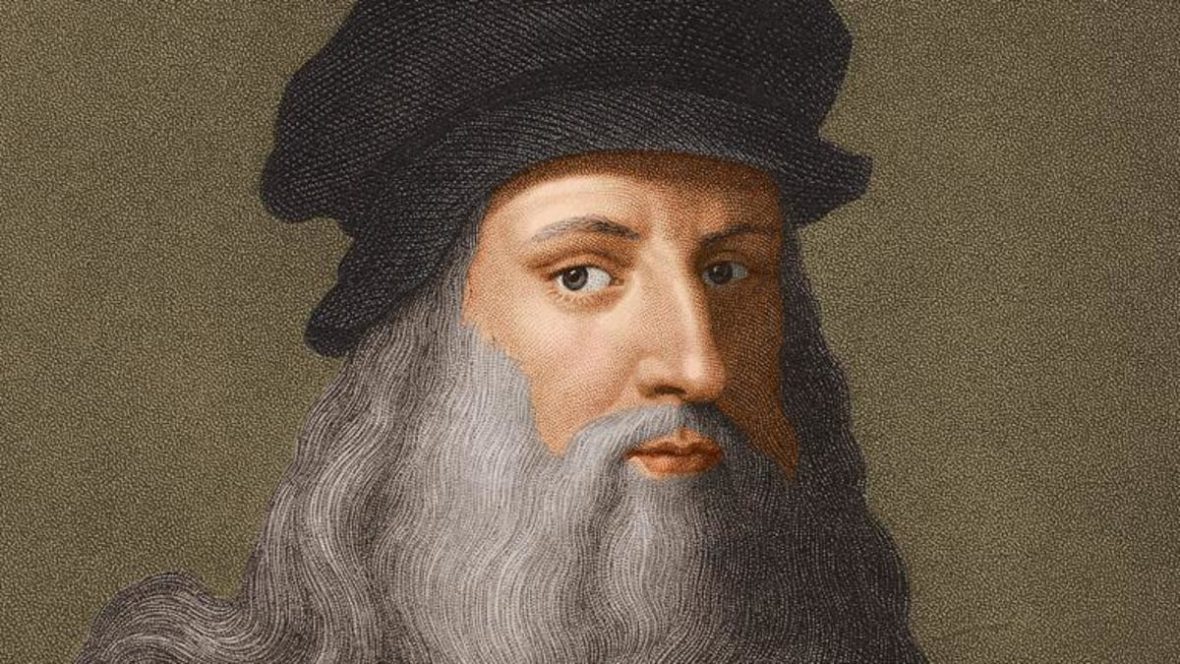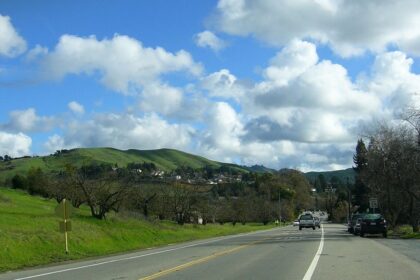Leonardo di ser Piero da Vinci was an Italian polymath of the Renaissance, whose areas of interest included invention, painting, sculpting, architecture, science, music, mathematics, engineering, literature, anatomy, geology, astronomy, botany, writing, history and cartography. He has been called the father of paleontology, ichnology and architecture, and is widely seen as one of the greatest painters of all time. Take a look below for 30 more fascinating and interesting facts about Leonardo da Vinci.
1. Many historians and scholars see da Vinci as the prime example of the “Universal Genius” or “Renaissance Man,” an individual of “unquenchable curiosity” and “feverishly inventive imagination,” and he’s widely considered one of the most diversely talented individuals to have ever lived.
2. Born out of wedlock to a notary, Piero da Vinci, and a peasant woman, Caterina, in Vinci in the region of Florence, Leonardo was educated in the studio of the renowned Florentine painter Andrea del Verrocchio.
3. A lot of his earlier working life was spent in the service of Ludovico il Moro in Milan.
4. Da Vinci later worked in Rome, Bologna and Venice. He spent his last years in France at the home given to him by Francis I of France.
5. Leonardo was, and is, renowned primarily as a painter. Among his works, the Mona Lisa is the most famous and most parodied portrait and The Last Supper is the most reproduced religious painting of all time.

6. His drawing of the Vitruvian Man is regarded as a cultural icon, being reproduced on items as varied as the euro coin, textbooks and t-shirts.
7. A painting by Leonardo, Salvator Mundi, sold for a world record $450.3 million at a Christie’s auction in New York, on November 15, 2017.
8. About 15 of his paintings have survived. However, these few works, together with his notebooks, compose a contribution to later generations of artists rivaled only by that of his contemporary, Michelangelo.
9. He’s revered for his technological ingenuity. He conceptualized flying machines, a type of armored fighting vehicle, concentrated solar power, an adding machine and the double hull.
10. Only a few of his designs were constructed or even feasible during his lifetime, as the modern scientific approaches to metallurgy and engineering were only in their infancy during the Renaissance.
11. Some of da Vinci’s most practical inventions are currently displayed as working models at the Museum of Vinci.

12. He made substantial discoveries in anatomy, civil engineering, geology, optics and hydrodynamics, but he didn’t publish his findings and they have no direct influence on later science.
13. Da Vinci was an accomplished lyre player. When he was first presented at the Milanese court, it was as a musician, not an artist or inventor.
14. Bill Gates bought his Codex Leicester in 1995 for $30 million. This manuscript, the only one not held in Europe, includes da Vinci’s studies on hydraulics and the movement of water.
15. Da Vinci loved water. He developed plans for floating snowshoes, a breathing device for underwater exploration, a life preserver, and a diving bell that could attack ships from below.
16. He figures out why the entire Moon is dimly visible when it’s a thin crescent. Its nightshade is lit by light reflected from Earth, which appeared 50 times brighter from the Moon than the full Moon appears.
17. An ambidextrous, paranoid dyslexic, da Vinci could draw forward with one hand while writing backward with the other, producing a mirror image script that others found difficult to read.
18. He was a big fan of puns and word games. Folio 44 of his Codex Arundel contains a long list of playful synonyms for penis.
19. Da Vinci’s last words were: “I have offended God and mankind, by doing so little with my life.”

20. Over 500 years ago, da Vinci made an interesting observation about trees. He concluded that the total thickness of a tree’s branches is equal to the total thickness of the tree trunk. Trees across many species obey this rule.
21. He used to buy caged animals at the market just to set them free.
22. He recommended gazing at stains on a wall or similar random marks as a stimulus to creative fantasy.
23. Da Vinci invented the Miter Lock in 1497, which is still in use today, including in the Panama and Suez Canals.
24. Da Vinci claimed to have dissected more than 30 people in his pursuit to further understand human anatomy, and his more than 240 detailed drawings and over 13,000 words of observations revealed many then unknown characteristics of our bodies.
25. He deliberately left errors in the designs of his inventions, in order to prevent it from being copied.
26. His father married four times, including his marriage to a 16 year old, during his lifetime and in all, Leonardo had 17 siblings and half-siblings. Two of his father’s wives died without bearing any children. Interestingly, his father never married his biological mother.

27. While learning painting from his teacher, Andrea del Verrocchio, Leonardo was asked to draw a painting of an angel. His drawing was so good that Andrea decided to never paint again.
28. He was very slow to finish his work. He left many unfinished paintings, writings, and inventions. Some of his inventions were built using his designs, but many failed to materialize.
29. Da Vinci didn’t complete his first commissioned painting, The Adoration of the Magi, for Florence’s San Donato, a Scopeto monastery. He left for Milan to serve as an engineer, architect, sculptor and painter for the ruling Sforza dynasty.
30. At the age of 24, da Vinci was arrested on charges of sodomy along with his male companions. Would it not have been for the lack of witnesses, he could have been punished by death.





One Comment
Pingback:
June 4, 2018 at 2:42 am